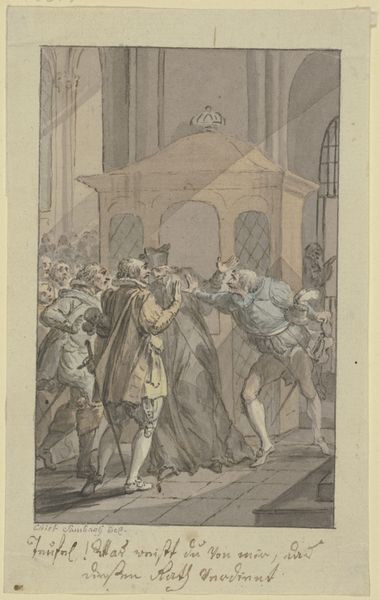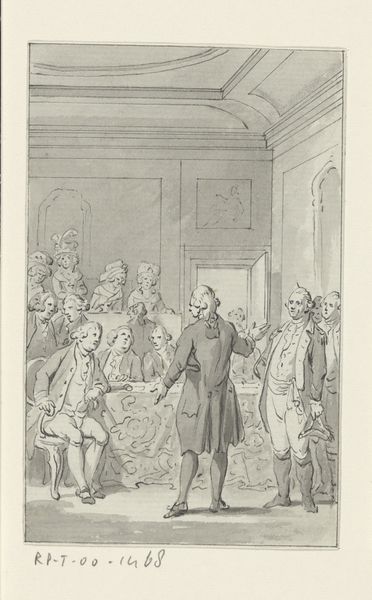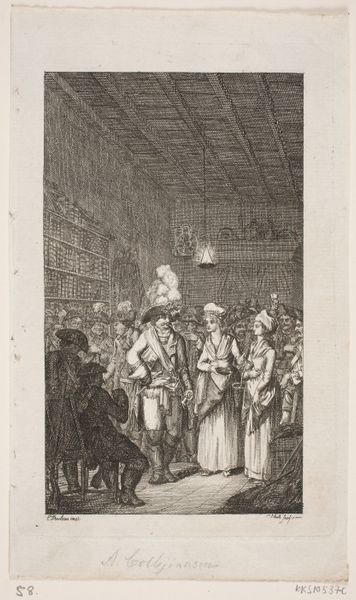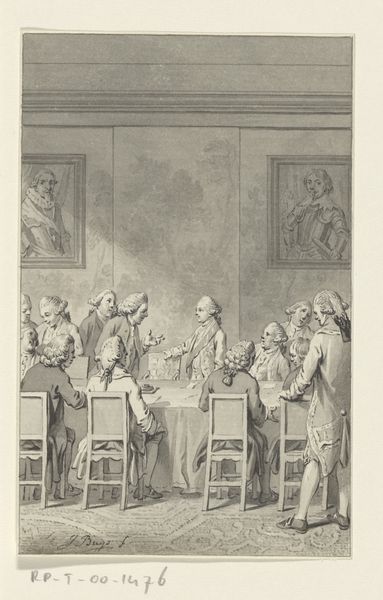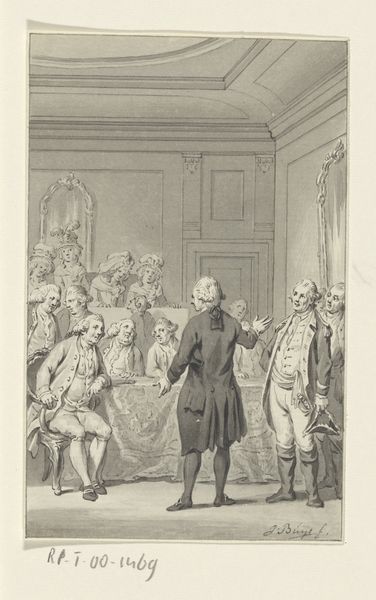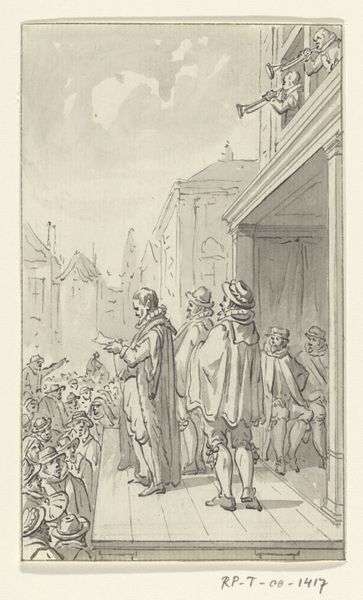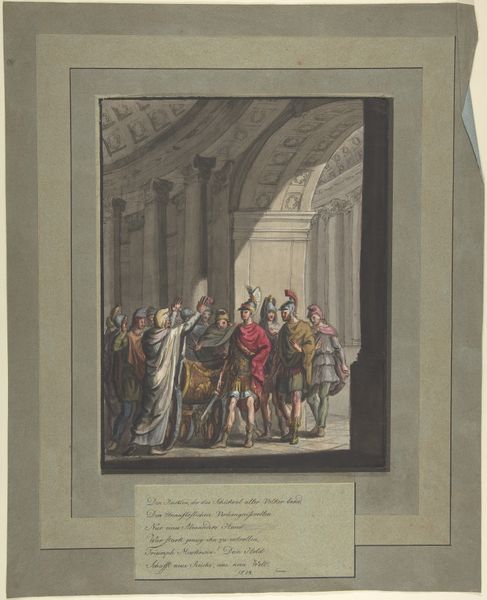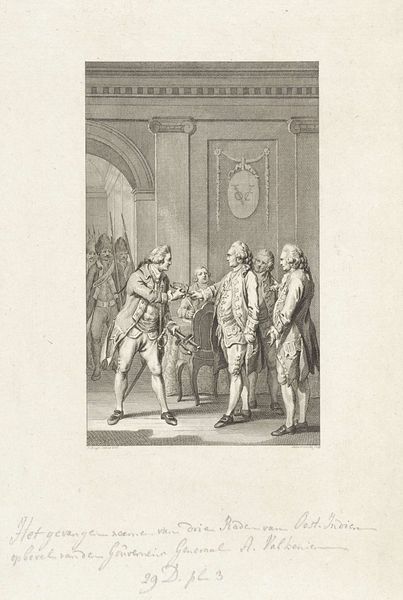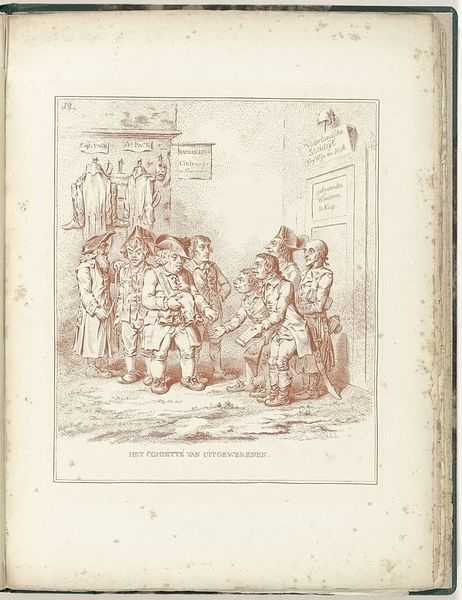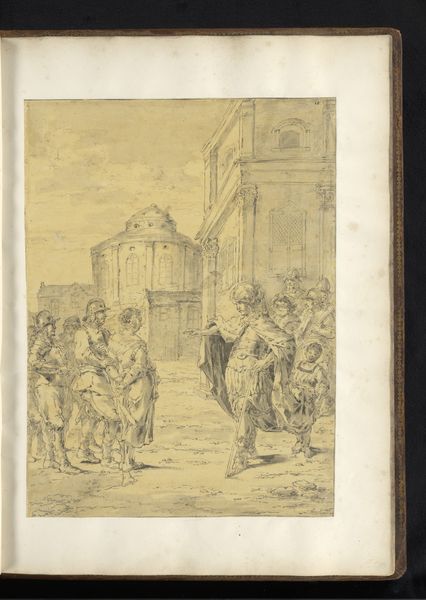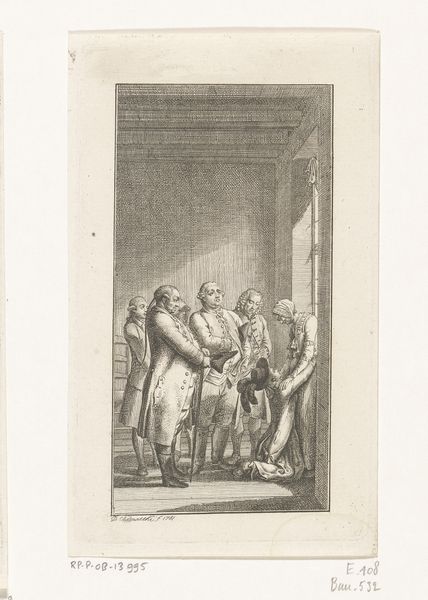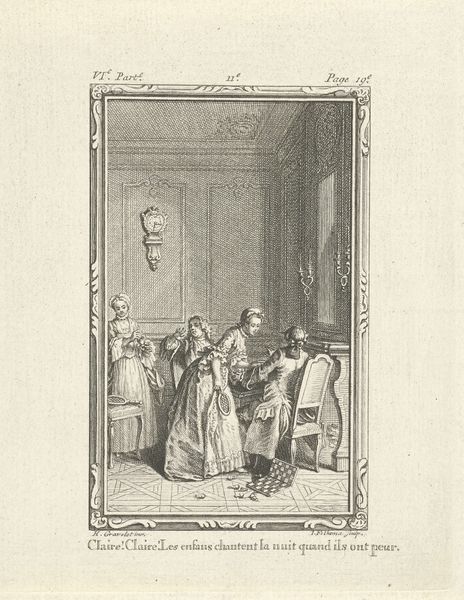
Ein Fürst mit seinem Gefolge an einer verschlossenen Tür, neben der ein erschöpfter Mann sitzt
0:00
0:00
drawing, watercolor, ink
#
drawing
#
narrative-art
#
baroque
#
figuration
#
watercolor
#
ink
#
15_18th-century
#
watercolour illustration
#
genre-painting
#
history-painting
Copyright: Public Domain
Curator: This intriguing watercolor and ink drawing, currently held at the Städel Museum, is titled "A Prince with his Entourage at a Locked Door, next to Which Sits an Exhausted Man" by Christian Sambach. What are your initial thoughts? Editor: Well, the scene strikes me as immediately tense. There's this obvious dichotomy between the opulent, albeit pale, figures clustered around what appears to be a locked door, and then the slumped figure beside them seemingly left to languish. Curator: Absolutely. The work presents an interesting commentary on power dynamics. Look closely at that exhausted man, slumped almost in defeat. He could represent those left behind, or shut out by societal structures and inaccessible systems of governance represented by the barred door. It could be commentary on accessibility. Editor: That reading is interesting in connection with the rigid social codes of the baroque period which is likely the era this drawing emulates or is part of. To that point, consider how the light focuses predominantly on the entitled Prince and his circle, leaving the exhausted figure in shadow. The artist draws sharp distinctions between them not just physically but also socio-economically, as if it reflects systems of power during its period. The art of social imagery as critique. Curator: Precisely. And beyond its historical context, we could interpret the door itself as representing various contemporary barriers - socioeconomic, political, even emotional. Consider how institutions create inaccessible systems to preserve the powerful at the detriment to other members of the community. The figures in Sambach's art is something very prescient for modern-day culture, no? Editor: Absolutely, it resonates across time, highlighting persistent issues. Yet, I think it's vital to acknowledge the art's original social milieu when dissecting its modern interpretation. Are we ascribing the same power of interpretation to all audiences? What type of politics in this historical social climate gave way to what modern audience the ability to deconstruct these power structures? Curator: Perhaps we're invited to examine who gets access, literally and figuratively, and question the reasons why, not just for a 17th-18th century social scene but contemporary constructs too. The Prince standing so confidently by a door barring the commoners. How interesting, truly, is our social commentary, even to today. Editor: Ultimately, Sambach offers us a glimpse into the tensions of his era, perhaps subconsciously, offering parallels that continue to fuel social justice discourses now. It underscores the importance of constantly re-evaluating our roles within such dynamics and hierarchies.
Comments
No comments
Be the first to comment and join the conversation on the ultimate creative platform.

